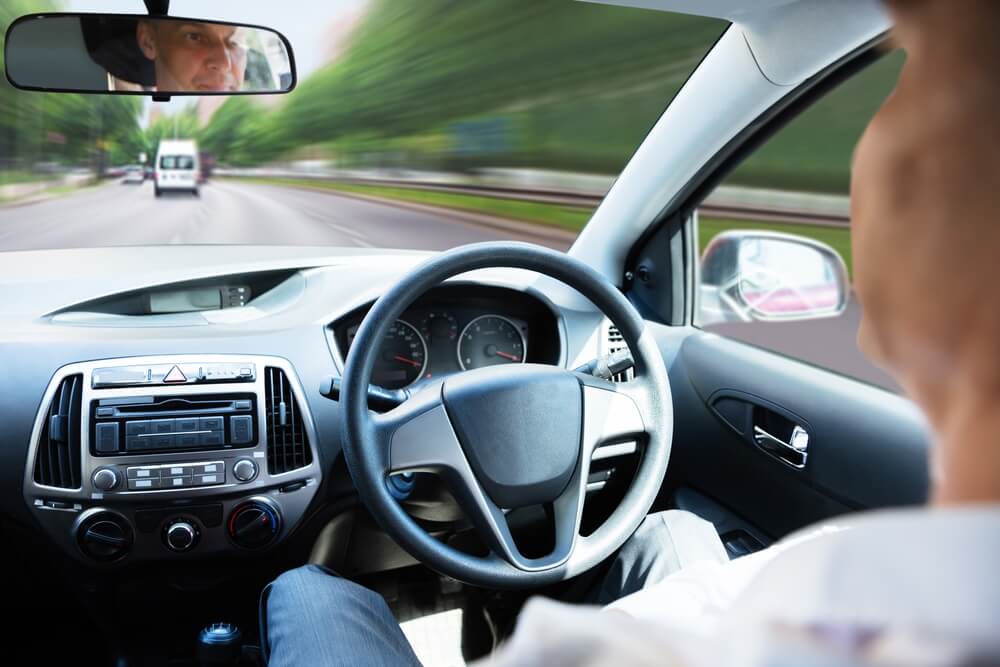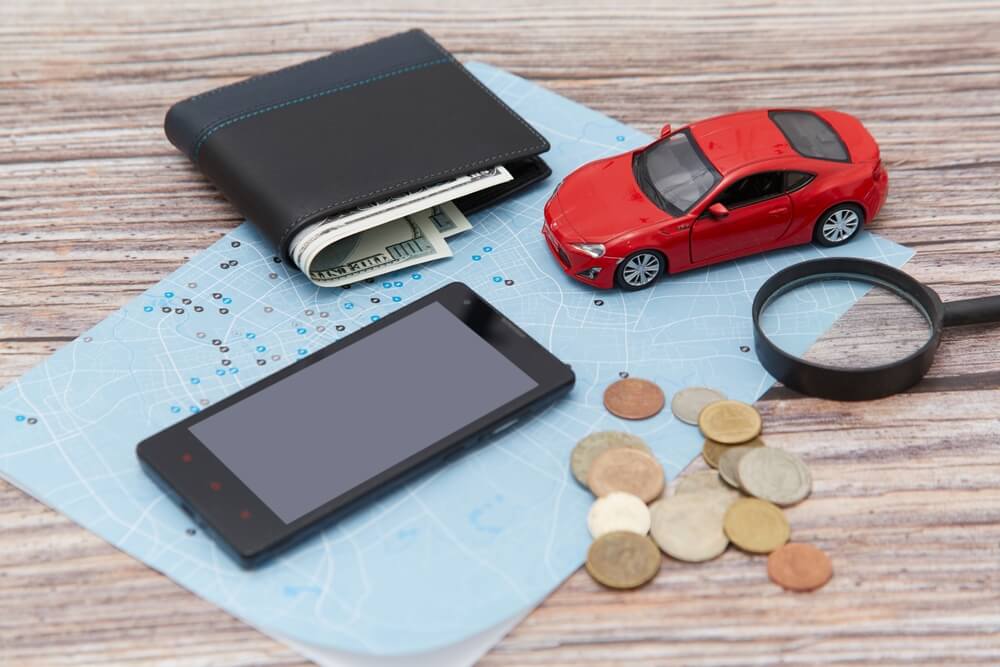Feeling nervous before your first self-drive in Thailand is common. Many beginners worry about new road rules, strange signs, and local traffic habits. It is normal to feel some anxiety on your first day.
Thailand requires all foreigners to hold an International Driving Permit if they want to rent and drive a car. This rule helps keep everyone safe on the road.
This guide, Self-Drive Thailand For Beginners: How To Overcome Your First-Day Nerves, offers clear steps to prepare you for your journey. You will learn what documents you need, the road rules, and tips to stay calm and safe.
Gain confidence for your first drive in Thailand—read on to learn how.
Preparing for Your First Self-Drive in Thailand
Taking your first road trip can feel stressful, but good planning helps calm nerves. Check all travel papers and get familiar with local rules before you set off.
How do I get an International Driving Permit (IDP)?
Getting an International Driving Permit (IDP) is necessary for driving in Thailand if your national driver’s licence is not in English. The process is straightforward and can save you from fines or legal issues.
- Check if you are eligible. You must be 18 years or older and hold a valid driving licence from your home country.
- Find out where to apply. In most countries, you can get an IDP from automobile associations or relevant government departments.
- Fill out the application form. Provide personal details, your current driver’s licence information, and contact details.
- Submit supporting documents. This usually includes a copy of your current driver’s licence and passport-sized photos.
- Pay the fee. Costs vary by country but expect to pay a small charge for processing the permit.
- Wait for processing. Some agencies issue IDPs on the same day, while others might take a few weeks.
This permit allows you to drive in Thailand for up to one year, ensuring you stay within legal requirements while exploring scenic routes and gaining confidence on your travel adventure.
What essential documents should I carry when driving in Thailand?
After getting your International Driving Permit, it’s time to focus on what documents you need for a smooth travel experience in Thailand. Keeping the right paperwork with you is key to avoid any issues on the road.
Here is a list of essential documents to carry when driving in Thailand:
- Your home country’s driving license along with your International Driving Permit. These prove that you are allowed to drive.
- The passport shows who you are and is often asked for by car rental companies.
- Car rental agreement papers; this document is proof that you have legally rented the car.
- Proof of insurance, including Personal Accident Insurance, if available, ensures that you are covered in case of an accident.
- A detailed map or a GPS device helps prevent getting lost and eases navigation anxiety.
- Emergency contact numbers; these include local emergency services and the rental company’s contact details.
Make sure these items are easily accessible while travelling to ensure a worry-free journey on Thai roads.
How can I check my rental car for existing damage?
Checking your rental car for any damage is vital. This ensures you don’t get charged for pre-existing issues.
- Inspect the exterior carefully. Look for dents, scratches, and paint chips. Check all sides of the car, including the roof and bumpers.
- Examine the tyres. Make sure they are properly inflated and look for any cuts or uneven wear.
- Open the doors and check for interior damage. Look at the seats, dashboard, and floor mats for any stains or tears.
- Test all lights on the car. Turn on headlights, brake lights, and indicators to ensure they work correctly.
- Take photos of any damage you find. Capture clear images showing the area affected. This can serve as evidence if needed later.
- Notify the rental company of any damage before driving off. Report findings so there are no disputes when returning the car.
- Keep a copy of your inspection report and photos with you during your trip. This helps in case questions arise after you return.
Following these steps will help reduce anxiety as you start your self-drive adventure in Thailand.
What are the key Thai road rules I need to know?
Drive on the left side of the road in Thailand. Be aware of key signs like stop and yield to ensure your safety.
Why do I need to drive on the left-hand side in Thailand?
In Thailand, cars drive on the left side of the road. This is significant because it keeps traffic flowing smoothly. It also helps prevent accidents. Many countries follow this rule, so it might feel strange at first if you are used to driving on the right.
Driving on the left means that your steering wheel will be on the right side of the car. Getting accustomed to this setup can enhance your confidence as a first-time driver in Thailand.
Adjusting quickly will help you enjoy your journey more and alleviate anxiety while moving through beautiful scenic routes.
What are the common Thai road signs I should recognise?
Thai road signs are easy to spot. They use bright colours and clear symbols. Look out for the red octagon sign, which means “Stop.” A blue circle indicates that you must give way. This sign will help you know when to slow down.
Speed limit signs show the maximum speed allowed. These limits can change in different areas, like towns or highways. Watch for warnings about curves or pedestrians as well. Keeping an eye on these signs makes driving safer and helps build confidence on the road.

Dealing with Local Driving Habits
Local drivers in Thailand can be unpredictable. Watch out for sudden stops and turns, as they happen often. Stay calm and focus on the road to keep yourself safe.
How can I stay safe from tailgating and sudden U-turns?
Tailgating is common in Thailand. Keep a safe distance from the car ahead. This gives you time to react if they brake suddenly. Watch for sudden U-turns too, as drivers may change lanes without warning.
Stay alert and use your mirrors frequently.
Stay calm and drive at a steady speed. Avoid aggressive driving behaviours. If someone tailgates you, maintain your speed or gently change lanes if possible. This can help reduce stress on the road and keep you safe while exploring Thailand’s scenic routes.
What should I watch out for with unpredictable traffic patterns?
Unpredictable traffic can be tricky in Thailand. Drivers often make sudden lane changes without signalling. Watch for motorbikes weaving through cars, especially in heavy traffic. Stay alert at intersections where vehicles may not follow the rules.
Unexpected stops are common too. Be ready for other drivers to brake suddenly or perform U-turns without warning. Traffic signals and road signs might seem ignored by some, adding to the confusion.
Keeping a safe distance from other vehicles helps avoid accidents while driving in Thailand.
How can I stay safe while driving in Thailand?
Check the speed limits on different roads. Familiarise yourself with where the speed cameras are located.
What speed limits apply and where are speed cameras located?
Speed limits are vital for safety when driving in Thailand. Knowing where speed cameras are can help you avoid fines.
- The maximum speed limit on highways is 120 km/h. This applies to major roads, but always watch for signs indicating lower limits.
- In urban areas, the speed limit is usually 50 km/h. Look for local signs that may show different limits.
- Speed limits near schools and hospitals can drop to 30 km/h. Always pay attention to these important areas.
- Speed cameras are common in Thailand, especially on highways and main roads. They typically flash when you exceed the limit.
- Police checkpoints also monitor speeding, so be aware of their locations while driving.
- Expect fines if caught speeding, with penalties varying based on how fast you were going over the limit.
- Driving at a safe speed avoids fines and keeps you and others safe on the road.
Following these rules helps build your confidence as a new driver in Thailand.
How do I ensure I have adequate insurance coverage?
Having the right insurance is key for driving in Thailand. This keeps you protected while on the road.
- Check your rental agreement for insurance details. Most companies offer basic coverage but it might not be enough.
- Ask about collision damage waiver (CDW) options. This can reduce your financial responsibility if there are damages.
- Look into personal accident insurance (PAI). It covers medical costs in case of injury during an accident.
- Review liability coverage limits. This protects you from expensive claims if you cause damage to others.
- Confirm if travel insurance includes car rental cover. Some plans do, which can save you money.
- Consider additional coverage for theft or vandalism. This adds a layer of security to your rental car.
- Always read the fine print carefully before signing any documents. Understanding every part helps avoid surprises later.
This ensures that you’re safe and secure as you explore Thailand’s scenic routes while driving your rental car with confidence and peace of mind.
Self-Drive Thailand For Beginners
Driving in Thailand can be a great adventure. Many feel nervous at first. With the right prep, you can build confidence. Know the rules and stay aware of local habits. Enjoy your journey and explore all Thailand has to offer!
When you need to find a rental vehicle perfect for Self-Drive Thailand For Beginners, SPS Car Hire Pattaya is the natural choice. Please click on the button below to see our rental options. Click here to rent motorbikes from us.


